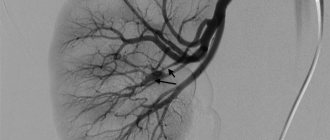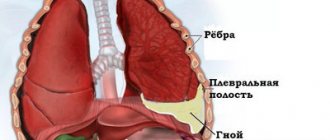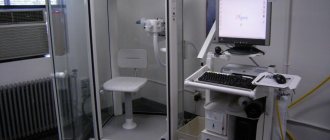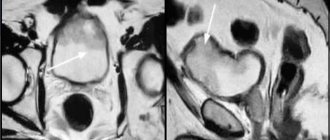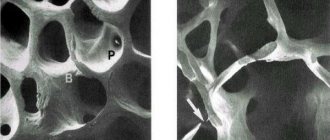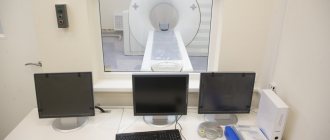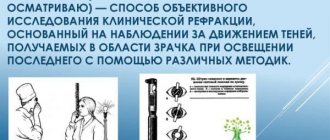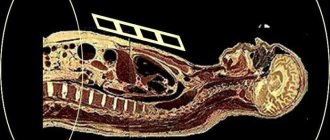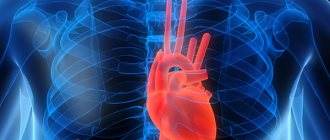A specialist prescribes an ultrasound of the child’s heart to examine the organ with pinpoint accuracy and identify abnormalities or pathologies. There is no need to be afraid of the procedure; it is completely safe and does not require much time or special preparation. Echocardiography is shown even to a newborn who has just been born.
Why is it carried out?
Ultrasound examination contributes to a complete assessment of the work of the child’s heart, visualization of its structure and structure. The procedure is very important for identifying diseases or suspected pathologies in the early stages and beginning to eliminate them.
Echocardiography is suggested in the following cases:
- If during a routine physical examination your pediatrician notices a heart murmur.
- Your baby periodically complains of pain in the chest on the left side.
- The newborn refuses the breast or sucks it with difficulty, but an examination by the pediatrician did not show any abnormalities in his health.
- When a baby cries, his lips and the area around his mouth turn blue.
- The child's hands and feet are often cold.
- In some cases, causeless fainting occurs.
- The child constantly feels a loss of strength and fatigue, and may suffer from shortness of breath and excessive sweating.
- If parents begin to notice that their offspring very often suffers from colds, in particular, he constantly develops pneumonia.
- Body temperature is below normal for a long time.
- There is a dry cough, which is not a sign of a cold.
- When palpated, a trembling is felt in the pit of the stomach, and pulsation in the veins on the neck.
- The child is not gaining weight well.
- There are heart defects in the family, which means bad heredity.
- The ECG showed mixed results.
- A baby should have a scheduled ultrasound at one month and one year.
Has your child developed a heart murmur? There is no need to worry, but you should visit a doctor. There are two types of noise: functional and organic. You should ask your doctor why they appeared and what species they belong to.
Cardiopathy can overtake a child at any age, be vigilant, it is expressed by shortness of breath, lack of oxygen during breathing, pale skin, dizziness and arrhythmia.
At what age should a child have an ultrasound of the heart?
Typically, cardiac ultrasound is prescribed for infants at the age of 1–1.5 months. However, if developmental anomalies or heart defects are suspected in newborns, such an examination can be done even in the first days of the baby’s life. In addition, cardiac ultrasound may be prescribed at a later age. Especially if symptoms such as:
- the presence of a heart murmur;
- “marbling” and blue discoloration (cyanosis) of the skin;
- cyanosis of the nasolabial triangle when crying.
A repeat ultrasound of the heart is usually not required. The only exceptions are those cases when a disease has been identified and control over it is necessary. However, some children's medical centers offer parents to conduct echocardiography for children once a year. However, this depends only on the equipment of the clinic and the desire of the parents to monitor the development and health of their own child.
Gnomik.ru recommends Rmh24.ru Service repair of refrigerators from Rmh24.ru We repair refrigerators of all brands. Free visit of a specialist and diagnostics!
Use promo code: Gnomic.ru
and get a guaranteed 10% discount
We work in Moscow and the region.
Call
Call a specialist
For baby
Echocardiography for a newborn from one to one and a half months is a planned procedure and is prescribed for all babies. True, there are cases when an examination can be prescribed for a baby immediately after birth. Experts make this decision if there is a suspicion of pathology, for example:
- When listening, murmurs are observed in the heart area.
- Blue spots and unnatural marbling are observed on the skin.
- The area around the baby's mouth turns blue when crying.
If deviations are not confirmed, the procedure will not be repeated. But if abnormalities in the functioning or development of the heart were noticed, the situation is taken under the control of doctors.
Many experts recommend performing a heart ultrasound every year as a preventative measure. Identify the slightest deviations from the norm and stop the occurrence of anomalies in time.
Indications for echocardiography for children
There are 3 types of cardiac ultrasound. Often, dynamic echocardiography is prescribed to monitor the progress of treatment. In this case, invasive methods do not allow us to draw an overall picture. For example, catheterization of the right side of the heart provides more information, but it is impossible to do it constantly and monitor the slightest changes from medications. Indications for echocardiography in children using the dynamic method:
- assessment of the effectiveness of surgical intervention;
- tracking progress during drug treatment;
- checking the cause of a sudden change in condition or deterioration in health.
This method is not used to diagnose diseases. More often, dynamic ultrasound is prescribed if heart pathology requires constant monitoring. This need arises when the left ventricle increases or decreases. Without constant monitoring, such a violation leads to serious complications, because the primary cause of deformation is heart failure and diffuse myocarditis. No less dangerous is valve stenosis, which can progress in a short period of time. Pulmonary hypertension develops ventricular or atrial septal defects. Treatment in this case requires systematic checks on an ultrasound machine, because with rapid development, the disease leads to cardiac arrest.
Transthoracic echocardiography is used for diagnosis. This procedure is not harmful for children and does not cause pain. Due to the ease of conducting the study, it is carried out first. In this case, a 10-minute analysis is necessary to detect:
- heart failure;
- Congenital heart defect;
- ischemic disease;
- myocarditis;
- pulmonary hypertension (of any etiology);
- cardiomyopathy;
- syncope;
- infective endocarditis;
- acquired heart defects;
- pulmonary embolism;
- pericarditis;
- tumors (benign and malignant);
- acute coronary syndrome.
Attention! Transthoracic examinations are prescribed to children to detect possible diseases if immediate relatives suddenly died from sudden cardiac arrest at a young age.
There is a transesophageal diagnostic method. It is less pleasant and is used only when standard ultrasound methods do not work. For this procedure, a special sensor is placed in the patient's esophagus. The waves emanating from it do not collide with tissues that interfere with obtaining complete information about the condition of the heart. Transthoracic echocardiography passes ultrasound through subcutaneous fat, bone and lung tissue, which makes the picture less clear. Transesophageal ultrasound is prescribed if:
- Studies using the standard method (transthoracic) did not produce results or the information was insufficient to make a diagnosis.
- Blood clots were found inside the heart.
- More data are needed for the treatment of infective endocarditis.
- Neoplasms of unknown etiology were found on the organ. It is not always possible to examine them during an external examination.
- Heart valves may wear out. It is prescribed if a person has a heart defect: acquired or congenital.
- There is a suspicion of aortic dissection. Requires urgent surgical intervention. Without the help of doctors, a patient with such a pathology will die within 24 hours.
- Symptoms indicate the presence of an aneurysm.
- The patient had a valve replaced. Transesophageal echocardiography allows you to check the performance of the prosthesis and identify disorders in the initial stages.
Carrying out the procedure
An ultrasound is prescribed by a pediatrician. The principle of the study is echolocation, which provides maximum information about the work and appearance of the organ.
A special gel is applied to the chest, and a special sensor is placed over it, emitting supersonic waves. The waves are safe and without them it is impossible to obtain feedback from organs and tissues that appears on the device’s monitor screen. The resulting image must be deciphered by a specialist and a written conclusion made.
The entire procedure takes from 5 to 40 minutes.
What is cardiac ultrasound and how is it performed?
Ultrasound diagnostics is based on the principle of echolocation. To obtain reliable information, the doctor applies a special water-based gel to the skin. And only after that a special sensor touches the examination site. This is done in order to get rid of the air gap that prevents supersonic waves from penetrating through the tissue.
The strength of these waves is very small, that is, such radiation simply cannot harm health. At the same time, the magnitude of these waves is quite sufficient for them to reflect from tissues and organs and transmit a return signal (echo) back to the sensor. The information received is sent to the ultrasound machine and displayed on the monitor in the form of an image. The doctor can only decipher it and write a conclusion.
Usually such actions take a little time. Just 3-5 minutes and information about the health of your baby’s heart is already in your hands. However, do not be alarmed if the ultrasound is delayed for a longer period. The examination method is absolutely harmless and safe. Therefore, even 20–40 minutes of studying the structure of your baby’s “motor” will not in any way affect his future well-being.
Preparation
To ensure that the study does not leave a negative aftertaste, you should take care of the following factors:
- Take with you a referral and an outpatient card, wet wipes, a clean, ironed diaper, a bottle of drink, a pacifier, and your baby’s favorite toy to entertain him during the procedure.
- It is advisable to feed your baby well before going to the clinic, this will make him calmer.
- With children at a more meaningful age, it is best to first have an explanatory conversation so that they are not afraid.
- If the procedure is repeated, it is necessary not to forget the previous results.
- It is advisable to know the height and weight of the child; based on the data, determine whether the development of the organ corresponds to them.
In the ultrasound room, the child will have to undress, but at home you should dress him in comfortable clothes that can be easily removed.
Advice: if you plan to visit several rooms in one day, then it is best to start with an ultrasound scan, since the child must be calm, otherwise the examination will not be complete.
What the study shows
The photo shows an ultrasound view of the heart.
A specialist who examines a patient using ultrasound equipment sees:
- Organ chambers, their sizes, integrity and condition.
- The walls of the atria, ventricles, their thickness.
- How valves work and their condition.
- Heart vessels.
- Circulation.
- Muscles of the heart.
- The presence or absence of fluid in the pericardial sac.
The examination reveals a large number of cardiac diseases. In addition to matching the standards, the doctor takes into account the physique, weight, height and age of the children.
What deviations can be identified
Using a heart ultrasound, the following diagnoses can be made to a child:
- Congenital defects.
- Atrial rhythm disturbances.
- Myocardial infarction.
- Blood clots.
- Pericarditis, endocarditis and other organ inflammations.
- Neoplasms.
- Heart rhythm disturbances, arrhythmia.
- Ischemic disease.
Timely diagnosis helps to establish a diagnosis in the early stages, which will facilitate treatment and help avoid serious health problems.
Norms and decoding
The norms of pediatric echocardiography are determined by the following parameters:
- How efficiently does the heart work?
- Consider the structure and size of the organ.
- How does blood flow function?
- Have any neoplasms been noticed?
Norms for a newborn:
- Left ventricle, wall thickness: 4.5 mm.
- Right ventricle, thickness here: 3.3 mm.
- Heart muscle, contraction frequency per minute: 120 – 140.
- Interventricular septum: 3 – 9 mm.
- Aortic diameter: no exact data.
- Left ventricle, ejection fraction: 66 – 76%.
Norm for older children:
Table of norms for echocardiography results for children from birth.
All data is approximate and depends on the age and gender of the child. Only a specialist can make an accurate decoding, so an amateur should not focus on this.
ECHO KG standards
The normal indicators are included in special tables, according to which the doctor assesses the state of organ functioning in each patient. Norms change according to parameters such as age, weight, gender.
Norms for a 1-month-old baby, all dimensions are indicated in mm:
| Index | Boys | Girls |
| Left ventricular end-diastolic dimension (LVEDD) | 19-25 | 18-24 |
| End-systolic left ventricle | 12-17 | 12-17 |
| Left Atrial Diameter (LAD) | 13-18 | 12-17 |
| LV (left ventricle) diameter | 6-14 | 5-13 |
| Thickness of the septum located between the ventricles | 6-14 | 5-13 |
| Left ventricular posterior wall thickness (LVPT) | 3-5 | 3-5 |
| (RV) wall thickness | 2-3 | 2-3 |
| Blood velocity (measured near the pulmonary valve) | 1.3m/s | 1.3 m/s |
Minor deviations from these indicators may be a variant of the norm; if the analysis is questionable, re-screening is carried out a year later.

